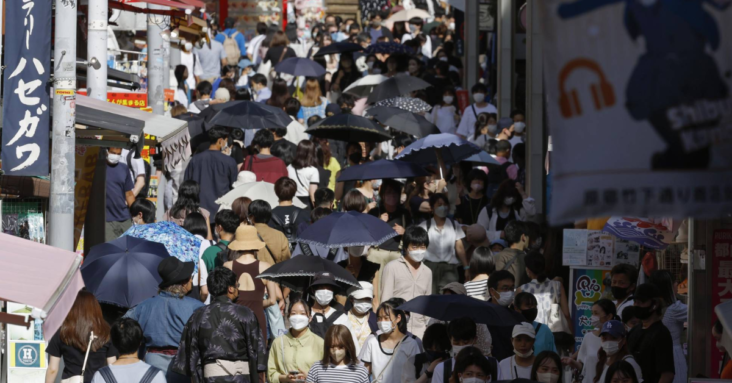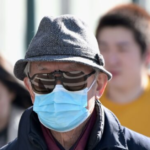
Shigeru Omi, who heads the government’s coronavirus panel, and 17 other medical and economic experts on Tuesday called on the government to downgrade the classification of the coronavirus to something similar to that of seasonal flu, in order to ease the burden on hospitals and public health centers.
In a 19-page proposal, the experts also urged the government to adopt a flexible approach to COVID-19 that would prevent the health care system from being overwhelmed, such as by no longer identifying close contacts and allowing general clinics to treat patients.
“Care at medical facilities and public health centers is on the verge of collapsing,” Omi said in a news conference at the Japan National Press Club in Tokyo. “We’ve been discussing this topic for over a month.”
Under the proposal, the basic course of treatment for COVID-19 patients under the law would no longer involve hospitalization, even if beds are available, although exceptions for mildly ill patients have been granted for some time. Those who are infected would not be requested to stay at home, but would do so voluntarily in line with common sense.
“It’s important for each and every person to actively take measures to reduce the risk of infection,” said Hideaki Anan, deputy head of Fujisawa City Hospital in Kanagawa Prefecture.
Seasonal flu is a Class V disease, and downgrading COVID-19 to an equivalent level would mean medical costs for COVID-19 patients would not be covered entirely by public money. However, the proposal said medical costs for severely ill patients and expensive treatments should be paid for with public funds.
On Sunday, Prime Minister Fumio Kishida said that although he is not thinking of downgrading the classification while the virus is spreading, he will consider it at a later date after consulting with experts.
In Japan, infectious diseases are placed either into Classes I to V or one of three other categories enabling an enhanced response. Ebola and the plague belong to Class I — the most serious — for which municipalities can request patients be hospitalized and refrain from going to work for a certain period of time.
Diseases under Class II include tuberculosis, while cholera is Class III and yellow fever is Class IV.
COVID-19, meanwhile, belongs to one of the three categories outside of Classes I to V — “new influenza and other diseases.” These are deemed to be as threatening as a Class II disease, but the category allows for strict countermeasures equivalent to Class I.
Because coronavirus is under a strong category, all hospitals and clinics are obliged to report every case to their local public health centers, which can be time-consuming for hospital and health center staff. But if it is downgraded to Class V or an equivalent, only designated hospitals are required to report cases.
The proposal said the government needs to come up with a new surveillance system for the virus given that a majority of the people infected with the omicron variant only suffer mild symptoms.
The current classification also means that only designated hospitals and clinics can treat patients, which is partly responsible for the health system at times becoming overwhelmed.
Similar opinions have been expressed by governors. Last week during a meeting of prefectural governors, Kanagawa Gov. Yuji Kuroiwa urged the central government to downgrade the coronavirus to Class V.
On Monday, Japan logged 139,668 daily new cases of the coronavirus, of which 464 were severe patients, according to the health ministry. The hospital occupancy rate for COVID-19 patients was 54.2% in Tokyo on Monday and 60% in Osaka Prefecture.



